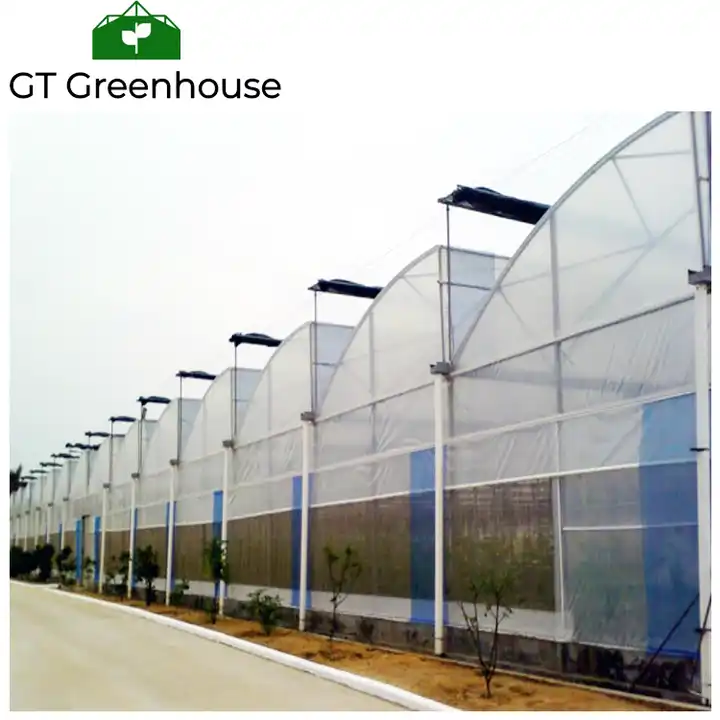Greenhouse plastic films have undergone significant advancements in recent years, revolutionizing the way crops are cultivated in controlled environments. These films play a critical role in optimizing light transmission, insulation, durability, and overall plant health within greenhouse structures. In this article, we will explore the latest innovations in greenhouse plastic films that are enhancing crop production, improving resource efficiency, and promoting sustainability in agriculture.
Light-Diffusing Films:
Traditional greenhouse films often result in direct, intense sunlight, which can cause light stress and uneven growth in plants. Light-diffusing films are designed to scatter and distribute sunlight more evenly throughout the greenhouse, reducing shading and ensuring uniform light distribution to all plant parts. This innovation promotes balanced growth, photosynthesis, and ultimately improves crop quality and yield.
Anti-Reflective Films:
Reflective surfaces within greenhouses can create hotspots and uneven light distribution, leading to localized stress and reduced crop productivity. Anti-reflective films are engineered to minimize light reflection, enhancing light absorption by the plants. By reducing hotspot formation and optimizing light utilization, these films enhance overall plant growth and productivity.
IR-Blocking Films:
Infrared (IR) radiation contributes to excessive heat buildup within greenhouses, potentially causing heat stress and reduced plant performance. IR-blocking films selectively block a portion of the IR spectrum while allowing beneficial light wavelengths to pass through. By reducing the transfer of IR radiation, these films help maintain optimal temperatures within the greenhouse, protecting plants from heat stress and improving energy efficiency.
UV-B Blocking Films:
While plants require ultraviolet (UV) radiation for various physiological processes, excessive UV-B radiation can be harmful and lead to crop damage. UV-B blocking films selectively filter out harmful UV-B rays, minimizing their negative effects on plant growth and development. These films provide an additional layer of protection against UV damage, ensuring healthier and more resilient crops.
Thermic Films:
Maintaining stable temperatures within the greenhouse is crucial for optimal plant growth. Thermic films are designed to respond to temperature fluctuations by adjusting their transparency. During cold weather, these films become more transparent, allowing maximum sunlight penetration and heat retention. In warmer conditions, they reduce transparency to limit excessive heat buildup. This innovation helps maintain a favorable temperature range, minimizing energy consumption and promoting energy-efficient greenhouse operations.
Recyclable and Biodegradable Films:
Increasing environmental concerns have led to the development of greenhouse plastic films that address sustainability challenges. Recyclable films are designed to be easily processed and reused, reducing plastic waste and environmental impact. Biodegradable films, on the other hand, break down naturally over time, minimizing the accumulation of plastic waste in the environment. These eco-friendly options offer sustainable alternatives without compromising on performance and crop protection.
Multi-Layered Films:
Multi-layered films consist of different polymer layers with specific properties, each serving a distinct purpose. For example, a film may have an outer layer for UV protection, a middle layer for strength and durability, and an inner layer for optimal light diffusion. These films provide a comprehensive solution that combines multiple benefits, enhancing light management, insulation, and crop yield.
Smart Films with Sensors:
Advancements in sensor technology have led to the development of smart films embedded with sensors that monitor and respond to environmental factors. These films can measure temperature, humidity, light levels, and even nutrient concentrations. By integrating smart films into the greenhouse system, growers can gather real-time data and make precise adjustments to optimize growing conditions, resulting in improved crop quality and resource efficiency.
Greenhouse plastic films have evolved significantly, offering a range of innovative solutions to enhance crop production, resource efficiency, and sustainability in agriculture. From light-diffusing and anti-reflective films to IR-blocking and UV-B blocking films, these advancements optimize light management, temperature regulation, and plant health. Additionally, recyclable and biodegradable options address environmental concerns, while smart films with embedded sensors enable precise control and monitoring. By embracing these innovations, growers can harness the full potential of greenhouse cultivation, promoting sustainable and resilient agriculture for the future.
